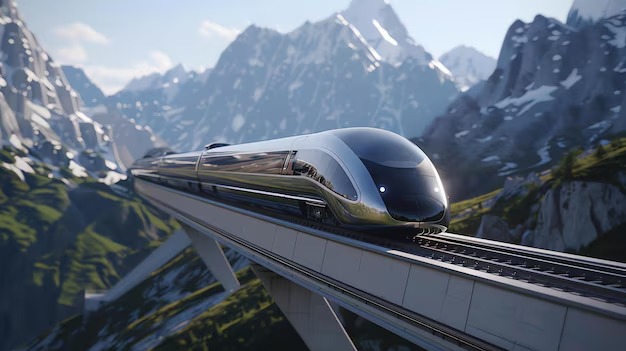

Cosmox Blogs
Maglev: The Peak of Locomotives
It was the year 1765 when a 29-year-old young man revolutionized transportation technology and made the Industrial Revolution possible. It was James Watt, a Scottish inventor and mechanical engineer. And yeah that “Watt” must be very nostalgic for you as it is impossible that you haven’t heard that term by your physics teacher speaking tirelessly about units of power. It was this person who laid the foundation of locomotives and steam engines. Fast forward to 259 years later we have gone from slow locomotives to blazingly fast bullet trains that go nearly 400 km/hr. But as Plato once said - “Need is the mother of all inventions”. In just over 2 centuries we went from the steam engines to what possibly may be the peak of Locomotives - The Maglev
Development
In the late 1940s British electrical engineer Eric Laithwaite, a professor at Imperial College London, developed the first full-size working model of the linear induction motor (A linear motor is an electric motor that has had its stator and rotor "unrolled", thus, instead of producing a torque (rotation), it produces a linear force along its length. However, linear motors are not necessarily straight. Characteristically, a linear motor's active section has ended, whereas more conventional motors are arranged as a continuous loop.
A typical mode of operation is a Lorentz-type actuator, in which the applied force is to the linearly proportional current magnetic field (F = IL x B) (where F, L, and B are vectors)
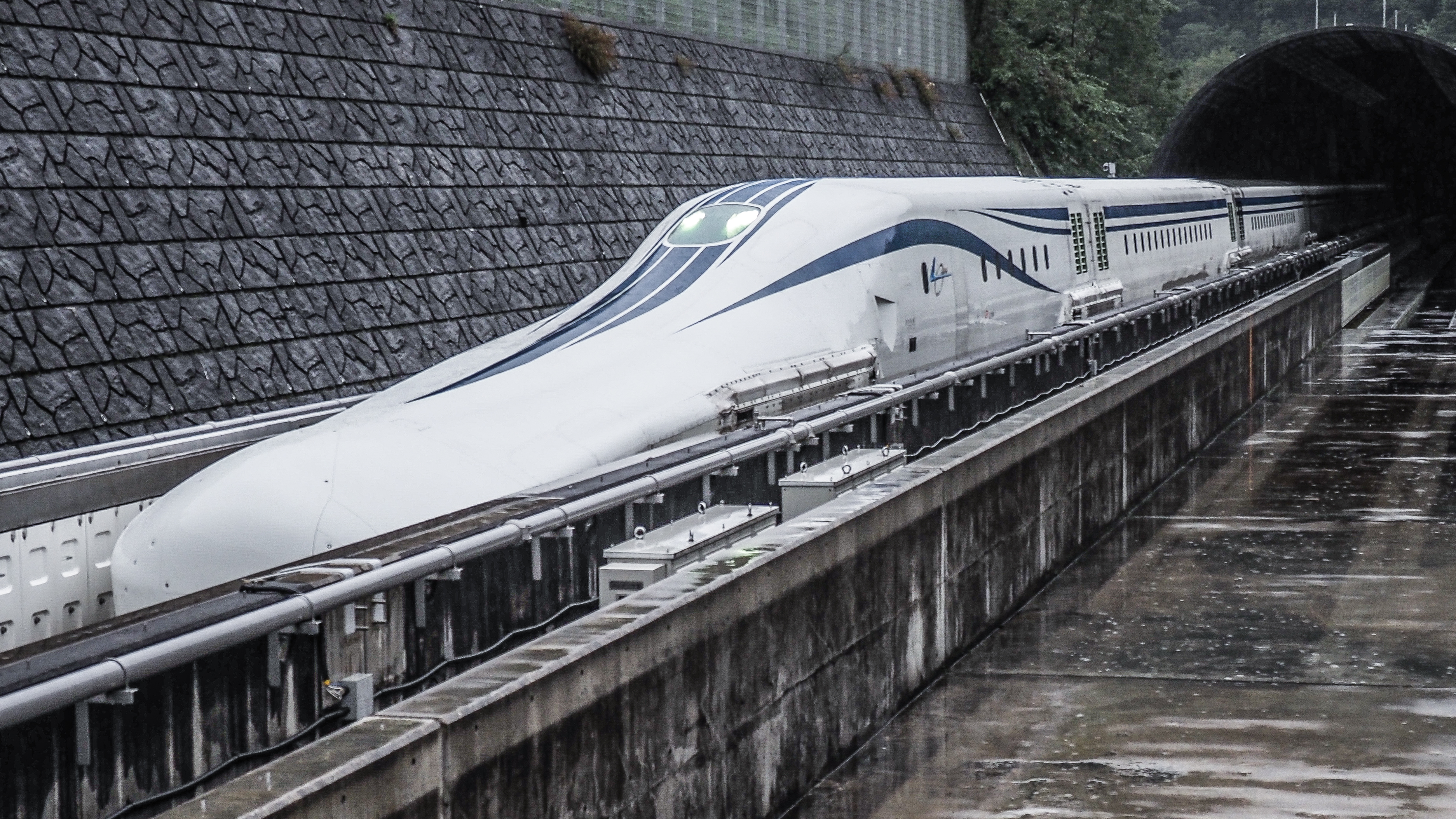
The proficient tech of maglevs:
In your childhood, you might have been fascinated by magnets and their properties and tried to stick similar poles to each other but they always repelled and separated from each other. Well, the same kind of engineering is used in this technology but in a very clever way. There are two types of principles used in this technology, Electromagnetic suspension and Electrodynamic suspension which are both used in different maglev trains.
Electromagnetic Suspension:
This technology works by pulling the train and propelling it using attractive forces by changing the electromagnetic polarity to opposite poles to attract the train in the desired direction. These trains levitate lower than maglevs that use Electrodynamic suspension methods and hover about 12 mm above the track which is more than enough to eliminate friction and achieve speeds up to 400 - 450 km/hr.
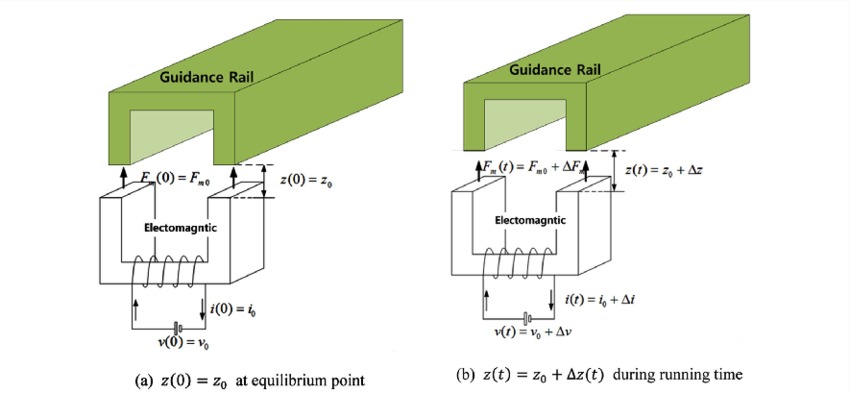
But the catch is the gap between the rail and magnet is important to note as the strength of the attractive forces decreases with an increase in the gap.
The strength of the attractive force is inversely proportional to the square of the distance between the rail and the magnet (F = 1/R^2, where F is the strength of the attractive force and R is the distance between them). This creates a problem if the begins to drop lower, the attractive forces of the sideline magnets will quickly weaken and it might cause the train to drop even lower this begs the need for active manual controls and feedback loops to ensure a stable ride, these gaps should be constant from 8 - 12mm. This type of technology is used in the Shanghai maglev. Because the track is just 30 km long.
Electrodynamic suspension:
This technology works using the vice versa method of electromagnetic suspension where the train is pulled up using attractive forces, these trains are pushed up by the repulsive forces and propelled by changing the polarity of sideline electromagnetic and passive coil to similar poles to repel and direct in the desired direction and this fixes the feedback loop problem found in EMS tech as repulsive forces enable to train to hover much higher to as astonishing height of 10 cm over the track. But when the train is stationary and is on top of the coils of the track, there is no change in the magnetic field and therefore no change in polarity as you might remember in Faraday’s experiment when a magnet is brought near a current-carrying coil it changes the polarity of the coil as the magnetic flux changes due to this reason this tech doesn’t work until there a high enough speed of at least 90 - 100 km/hr is achieved to a high enough flux linked with the coil.
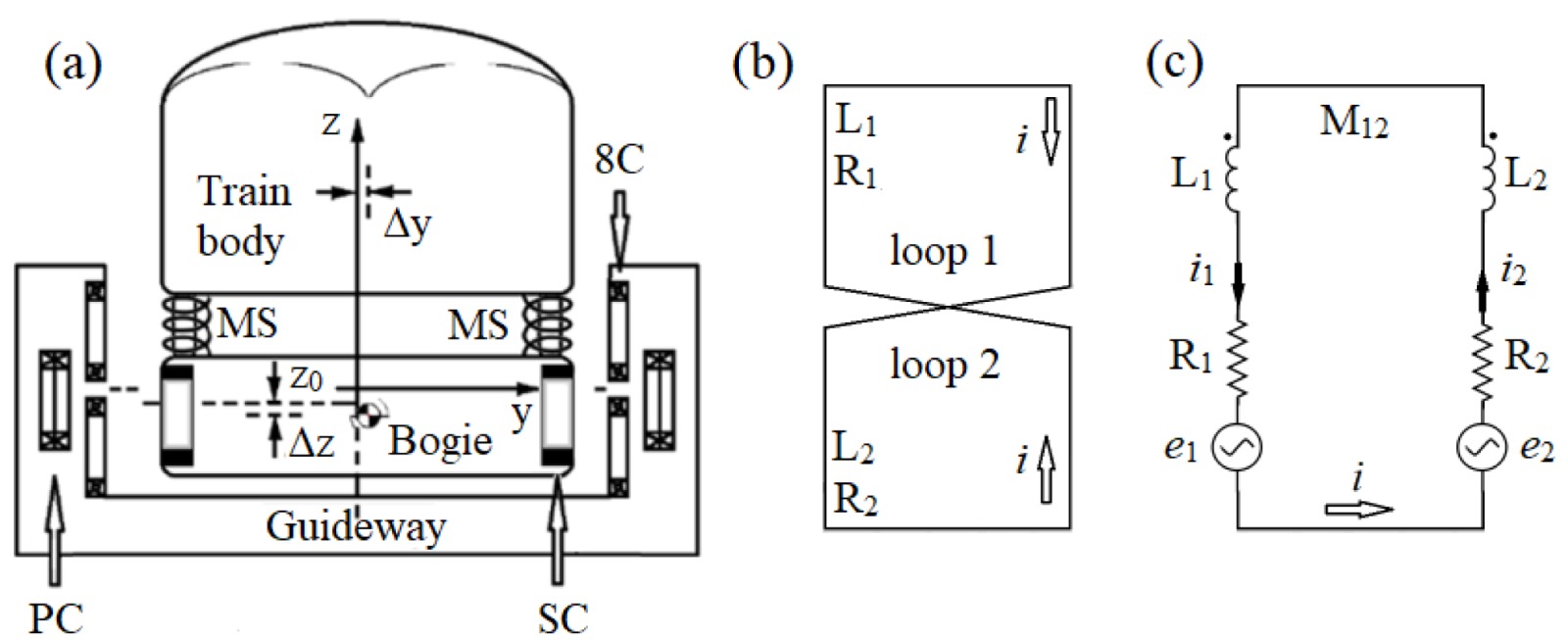
To tackle this problem wheels are inserted in the train and used before hitting a 100 km/hr speed and after that, they go back inside the the body of the train and lower down on the track when the train slows down to 100 km/hr just like the wheels of an airplane used in takeoff and landing.
The jaw dropping engineering of L0 series Maglev:
The Japanese train technology has always been over the top of the line and this time they have come up with a technology that has unprecedented locomotive technology and is arguably one of the rarest technologies in the world, the SCMaglev. Researched since 1962 and first tested in 1972.
With an astonishing speed of 600 km/hr, this train is faster than some of the aircraft and hovers nearly 10 cm above the track using the EDS (Electrodynamic suspension) levitation method. And is planning to travel from Tokyo to Nagoya.
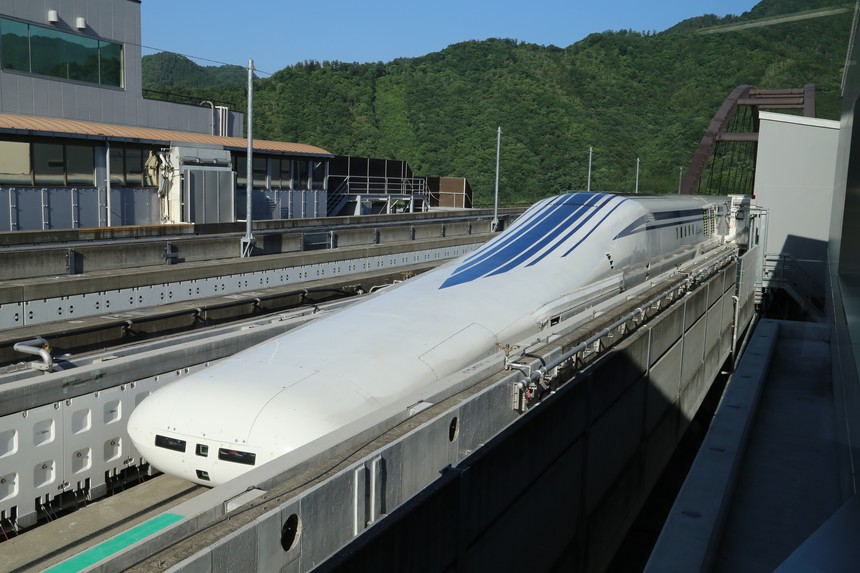
Propulsion Technology
The train’s compartments are installed with superconducting magnets filled with liquid helium to chill it down to -269 degree Celsius to decrease resistance as resistance in a conductor is directly proportional to temperature (R ∝ T) and conductance is inversely proportional to resistance (G ∝ 1/R ) and to make these magnets a successful superconductor with negligible resistance and infinite conductance the temperature should be near absolute 0 (0-degree kelvin or - 273-degree celsuis).
With temperature this low it enables these superconducting magnets to operate at their full potential without any problem created due to resistance.

As the train accelerates, the magnetic fields of its superconducting magnets induce a current into these coils due to the magnetic field induction effect. If the train were centered with the coils, the electrical potential would be balanced and no currents would be induced. However, as the train runs on rubber wheels at relatively low speeds, the magnetic fields are positioned below the center of the coils, causing the electrical potential to no longer be balanced. This creates a reactive magnetic field opposing the superconducting magnet's pole (in accordance with Lenz's law), and a pole above that attracts it. Once the train reaches 150 km/h (93 mph), there is sufficient current flowing to lift the train 100 mm (4 in) above the guideway.
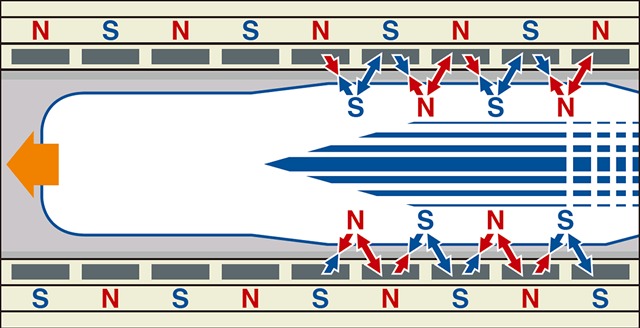
Wireless electricity
With no physical contact with the ground, you might be wondering how these trains receive such a high amount of electricity to function the superconducting magnets and supply electricity to train appliances. It does so by using the principle of electromagnetic induction with the help of power-collecting coils inserted in the trains in which electricity is induced by the ground coils without making any physical contact and transferring electricity wirelessly.
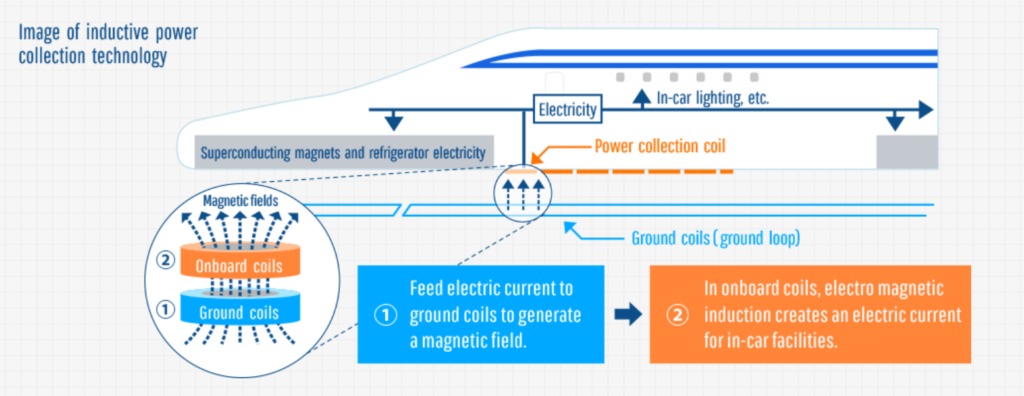
Safety measures
The insanely strong magnetic fields the superconducting magnets in the train produce can pose health hazards to passengers, to prevent this from happening magnetic shields are used on the passenger embarkation facility and rolling stock which helps reduce the magnetic field strength below the International Commission on Non-Ionizing Radiation Protection (ICNIRP) limit. To ensure a safe travel all while providing them with all the high-end tech facilities they would have never witnessed before.
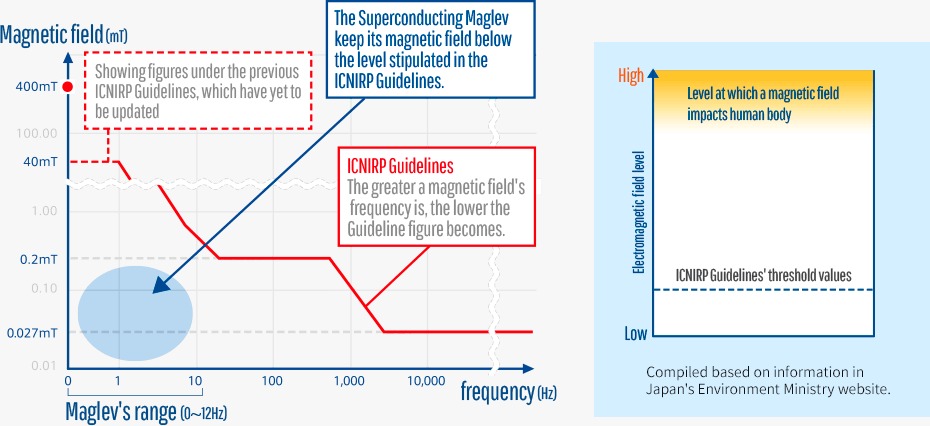
Opening Schedule:
After nearly 65 years of constant research and hard work, this train will be available for passenger travel in 2027 from Tokyo to Nagoya in just 30 min and an additional extension to Osaka in 2030 with a complete track of 438 km by 2030s. And will be able to operate in any weather condition without any delay and uniquely designed operation infrastructure to deal with earthquakes and other disasters.
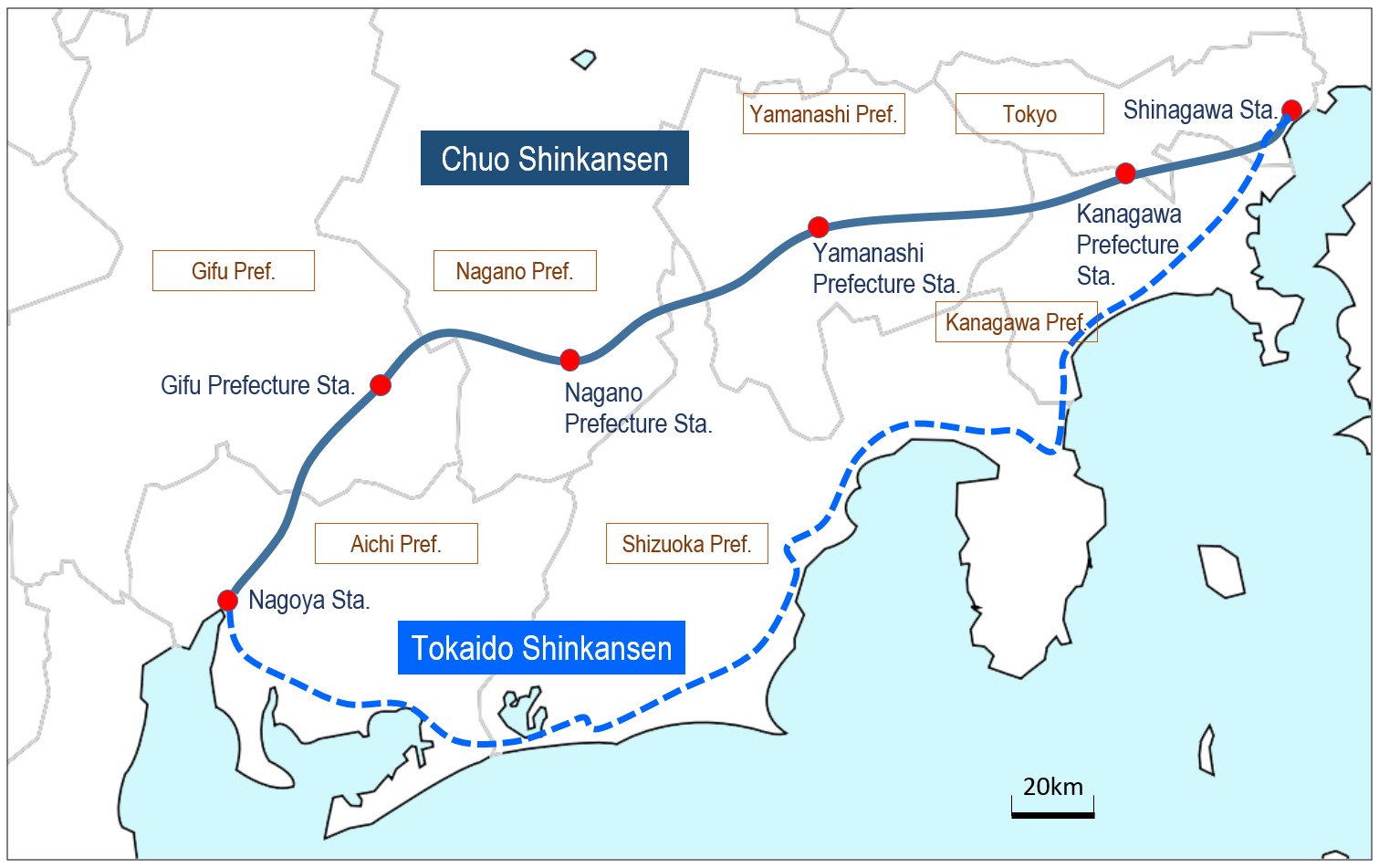
Conclusion
As maglev trains become less rare around the globe and multiple companies come up, compete and cooperate for better tech, the day will surely come when you will lose the sense of urgency to reach a certain location when sitting in these maglev trains and the differentiation between present-day air transport and maglev would become bleaker than ever before.

Cosmox Blogs
A non profit organization that works on writing and delivering blogs on cosmology, natural sciences & environment, so that people can learn more about it. We even run a forums page, where our users interacts with each other and discuss about Cosmology, Natural Sciences & Astronomy. We even run an instagram and a youtube channel with podcasts.